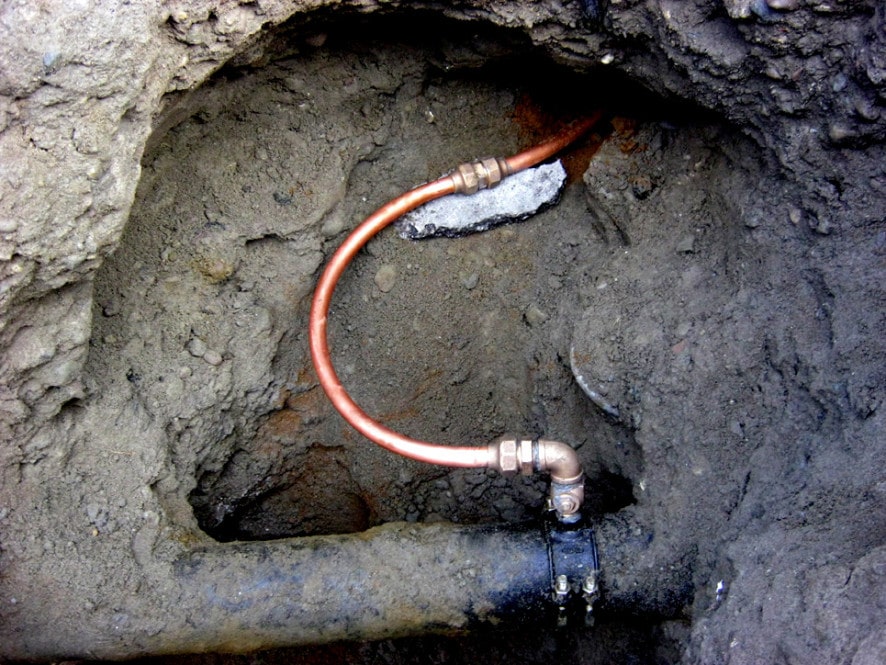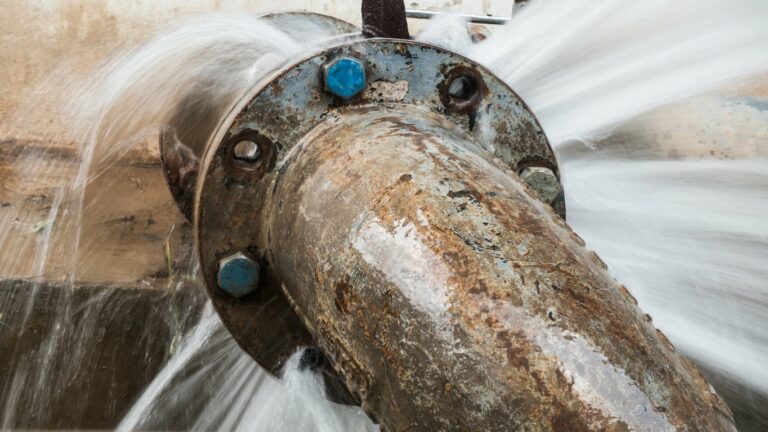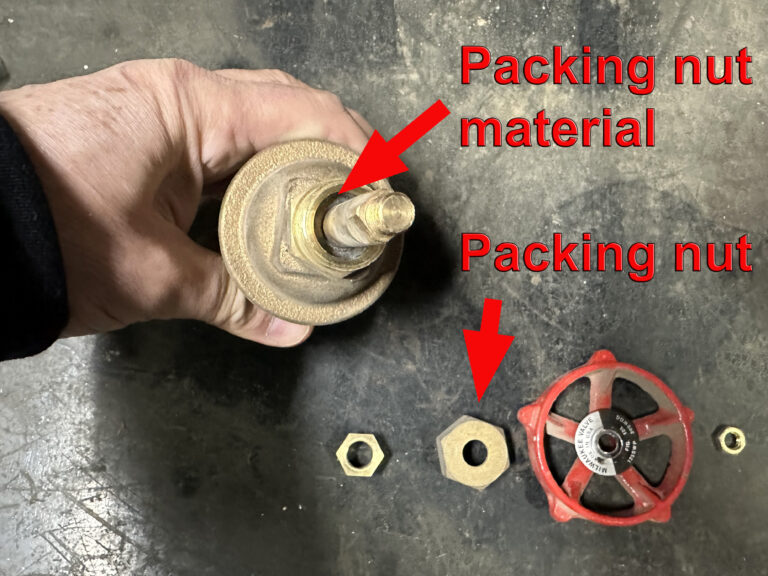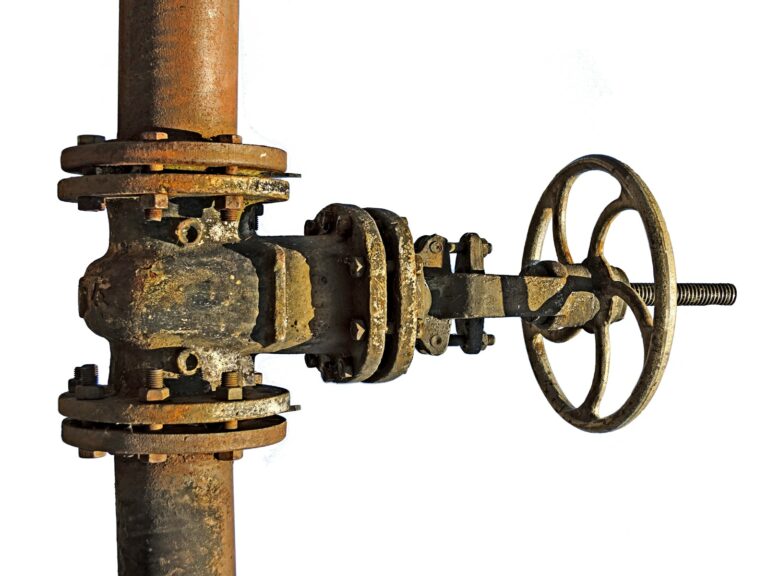When a water main replacement is performed details can be overlooked that can become very important later on. Like many construction or plumbing projects the devil is in the details. However unlike most installations a water main replacement gets buried and unfortunately some plumbers are like doctors, they bury their mistakes.
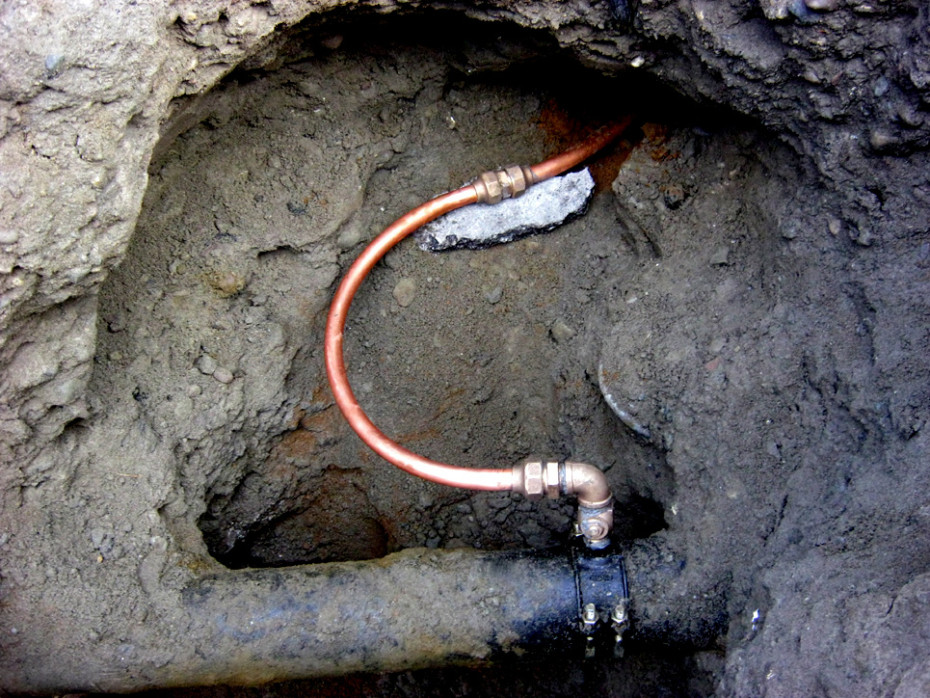
Water service lines up to 2″ in diameter are installed using K copper tubing. K copper is malleable, it is made to bend and comes in coils. This has advantages as ground can shift or settle over time. However when ground shifts or settles it causes stress on the copper tubing, making it move in kind with the ground shifting. That is why copper should never be connected straight into a tap connection. Copper must be connected with a right-hand swing so there is slack in the line. If settlement occurs the line will tighten due to a right-hand swing. A left-handed swing would cause the line to loosen and possibly leak.
Reconnecting the ground wire
The main electrical ground for any building is tied into the service providers system from the buildings electrical panel. In NYC most properties are serviced by Con Edison. However a secondary ground is required to be connected from the buildings electric panel to the street side of the main control valve for the water main.
A ground wire on a water main acts as a secondary ground in case the primary ground fails.
The ground wire must run as one continuous piece of wire from point to point – there can be no joints. It is attached to the water main using a ground clamp – not with tape, wire, or wrapping it around the pipe. Failure to attach the electrical ground or attaching it improperly can result in damage to the building and it’s appliances.
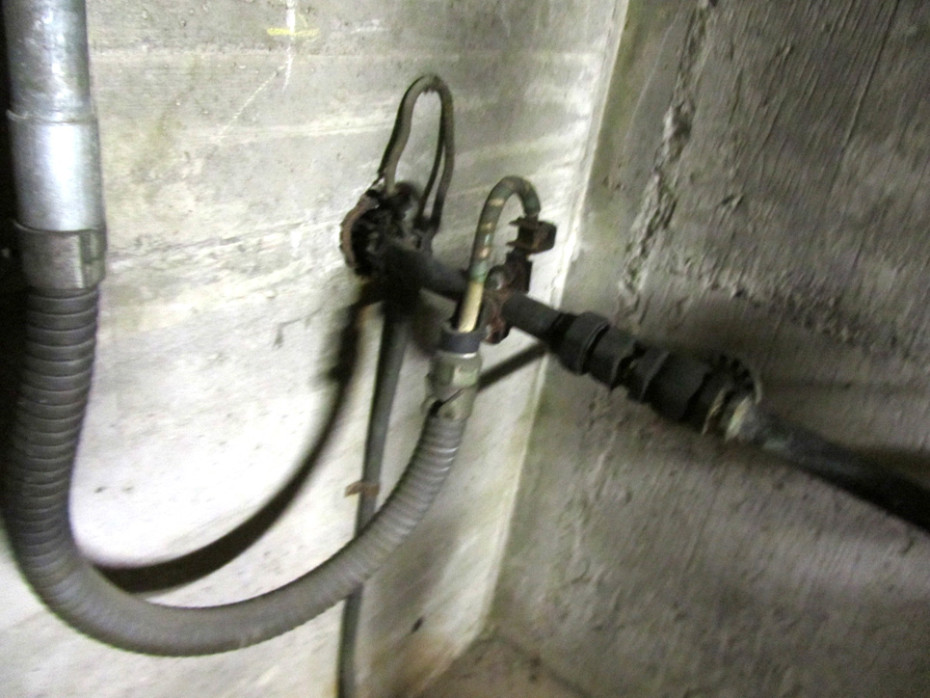
Re-sealing the water meter
Every water meter installed in NYC has a seal which consists of a threaded wire. This wire runs through drilled holes and joins the meter couplings to the body of the meter. In this way the meter cannot be detached and water used without it registering on the water meter. Frequently during the installation of a water service line the seal on the meter must be broken. This poses no problem as long as the water main contractor files a break seal permit with the NYC DEP. A break seal permit is free of charge and notifies the DEP to reseal the meter by installing a new wire.
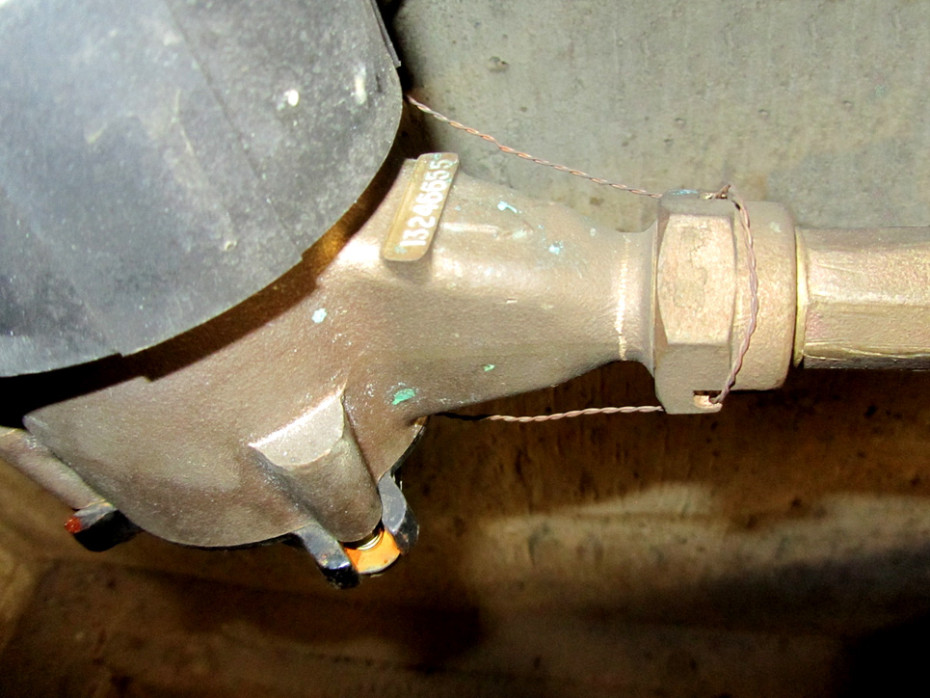
Re-cementing the foundation wall
Every time a water main replacement takes place an opening must be made through the foundation wall. The only exception is if the building is on a slab, meaning it has no basement. Care must be taken to carefully cement back the opening so it is water proof. Sometimes a detail like this can be overlooked and result in water damage to a property at a later date.
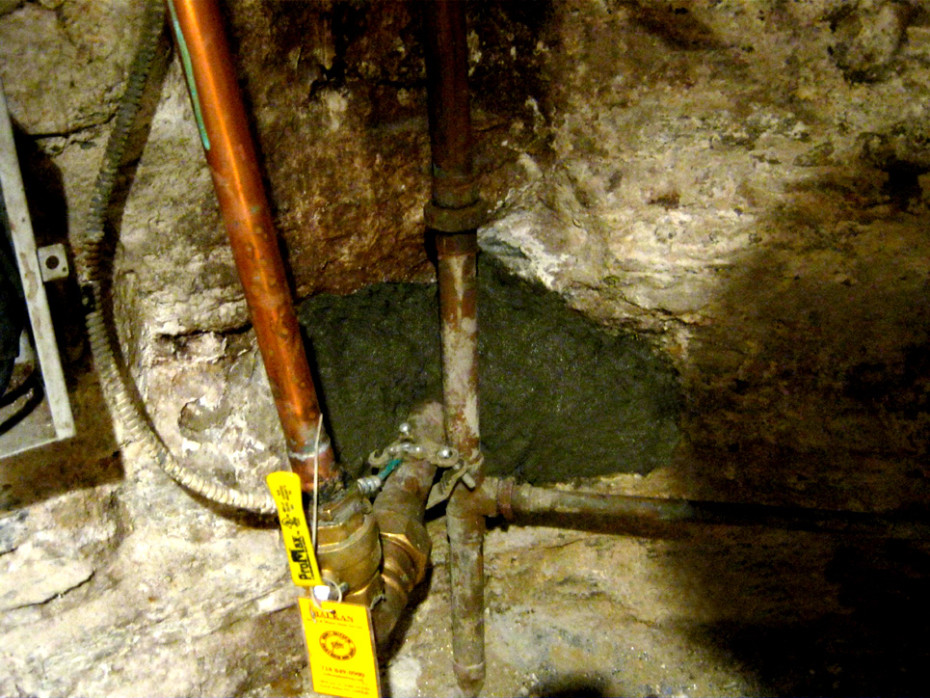
In many cases oakum (an oil treated horse hair rope) is used at the farthest point of the hole to form a water barrier. Then cement is carefully placed in layers until it is flush with the inside of the foundation wall. In some cases hydraulic cement must be used to seal a wall against water penetration. Hydraulic cement hardens in less than a minute and is completely water proof.
The basics of water main replacement
- Installations must be a minimum of 3 1/2′ deep.
- Lines must be properly sized depending on the demand for water.
- Only approved materials must be used.
- All lines must have a main control valve before connecting to the inside plumbing.
- All tap connections must be of adequate size.
- Excavations and tunnels must be carefully filled and compacted.
- Required permits must be secured.
- Lines for fire protection require a DEP inspection.
- Longterm guarantees are standard.
Most facets of a main line installation are easy to follow and understand. However overlooking one detail can lead to future issues that can have serious consequences. Only trust a water line replacement to an experienced water main contractor that specializes in this sort of work.

